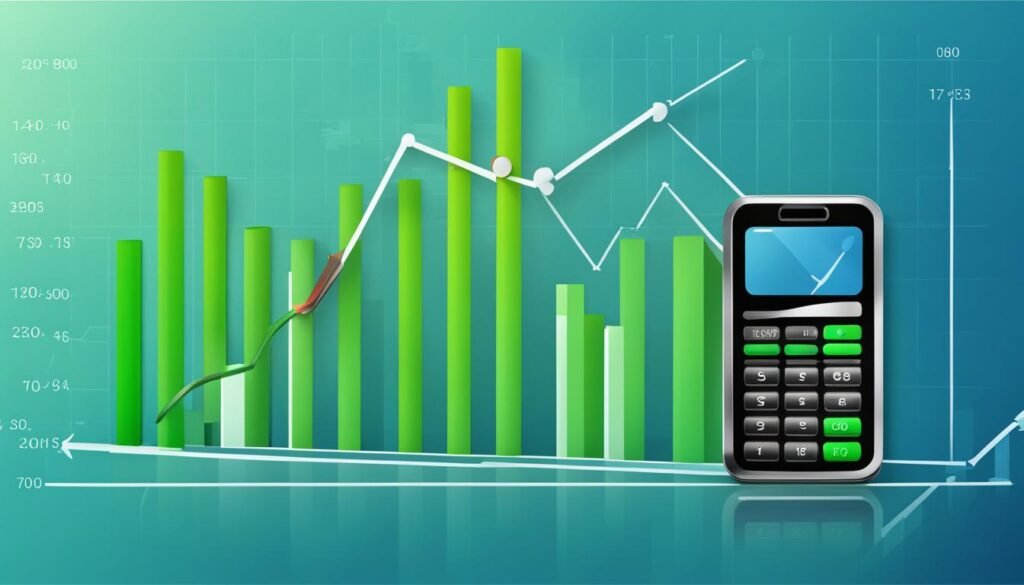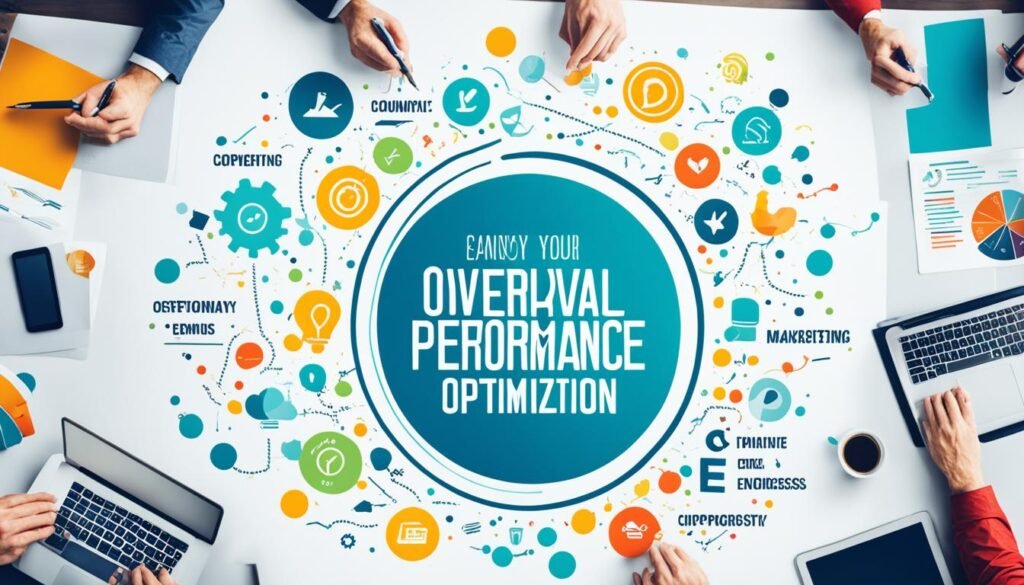Social media and digital marketing have become essential for businesses to improve their brand visibility, increase engagement, drive website traffic, and ultimately boost sales. To achieve these goals, businesses need to focus on social media optimization (SMO) tactics and develop a solid social media strategy.
Social media optimization involves various techniques to improve your social media presence and posts on different platforms. By posting at the right times, asking thought-provoking questions, utilizing carousel posts, and finding the optimal posting frequency, businesses can enhance their performance in the digital landscape.
By implementing effective social media optimization tactics, businesses can enjoy a range of benefits. These include faster follower growth, a deeper understanding of the target audience, increased brand awareness, improved reach, higher quality leads, increased sales, and a higher engagement rate. It is evident that SMO plays a crucial role in achieving marketing goals and establishing a strong presence across social media platforms.
In the following sections, we will explore the concept of social media optimization in detail, including its definition, benefits, and various optimization aspects such as engagement, growth, conversions, accessibility, and overall performance. We will also discuss the effective strategies that businesses can adopt to make the most of social media marketing.
Key Takeaways: Social Media And Digital Marketing
- Social media optimization (SMO) is crucial for businesses to improve their brand visibility and increase engagement.
- Implementing effective SMO tactics can lead to faster follower growth, deeper audience understanding, increased brand awareness, improved reach, higher quality leads, increased sales, and a higher engagement rate.
- Engagement optimization, growth optimization, conversions optimization, accessibility optimization, and overall performance optimization are key aspects of SMO that businesses should focus on.
- To achieve success in social media marketing, businesses need to develop and implement effective strategies, including clear goals and objectives, audience understanding, compelling content, consistent branding, and regular monitoring and analysis.
- An optimized social media marketing strategy is essential for businesses to thrive in the digital age and achieve their marketing goals.
What is Social Media Optimization?
Social media optimization (SMO) is the process of improving your social media strategy and presence to achieve better results. By employing various tactics, businesses can enhance their social media posts and optimize their brand’s online presence for faster follower growth, higher engagement, and improved conversions.
SMO involves optimizing individual social media posts to make them more impactful and engaging. This may include refining the content, using eye-catching visuals, and crafting compelling captions that resonate with your target audience.
In addition to post optimization, SMO also entails redefining your brand’s tone of voice to effectively communicate your values and engage with your followers authentically. By understanding your audience and tailoring your messaging, you can foster a stronger connection and drive higher levels of engagement.
Furthermore, SMO involves the analysis of performance metrics and audience insights to refine your social media strategy. By utilizing social listening tools and conducting performance analysis, businesses can gain valuable insights into their target audience’s preferences and behavior. This information allows for data-driven decision-making and optimization of your social media presence.
Overall, social media optimization aims to optimize your online presence, enabling faster follower growth, higher engagement rates, and improved conversions. By refining your social media strategy and leveraging performance analysis, SMO enhances your effectiveness in reaching your target audience and achieving your marketing goals.
Improve Your Social Media Strategy with Social Media Optimization
“Social media optimization aims to optimize your online presence, enabling faster follower growth, higher engagement rates, and improved conversions.”
Optimizing your social media strategy is vital to achieving success in today’s digital landscape. Here are some key elements to consider when implementing social media optimization:
- Define Clear Goals: Clearly outline your objectives and what you want to achieve through social media. Whether it’s increasing brand awareness, driving website traffic, or boosting conversions, having clear goals will guide your optimization efforts.
- Understand Your Audience: Conduct thorough research to understand your target audience’s demographics, interests, and online behavior. This knowledge will enable you to tailor your content and engage with your audience effectively.
- Create Compelling Content: Craft high-quality, valuable content that speaks to your audience’s needs and preferences. Use a mix of formats such as images, videos, and infographics to keep your content engaging and diverse.
- Maintain Consistent Branding: Establish a consistent brand identity across all social media platforms. Ensure your profile pictures, cover photos, and tone of voice align with your brand’s values and personality.
- Monitor and Analyze Performance: Regularly track key social media metrics such as engagement rate, reach, and conversions. Analyze this data to identify trends, understand what content resonates with your audience, and make data-driven decisions to optimize your strategy.
By implementing social media optimization strategies, businesses can significantly improve their social media presence, attract a larger and more engaged audience, and achieve their marketing goals.
Benefits of Social Media Optimization

When it comes to social media optimization (SMO), the benefits for businesses are numerous and impactful. By implementing the right SMO tactics, companies can unlock a range of advantages that can help them achieve their marketing goals and establish a strong presence on social media platforms.
Faster Follower Growth
One of the primary benefits of SMO is the potential for faster follower growth. By optimizing your social media presence and strategy, you can attract more followers who are genuinely interested in your brand and what you have to offer. This increased following not only enhances your online visibility but also provides a larger audience for your content and messages.
A Deeper Understanding of Your Audience
SMO enables businesses to gain a deeper understanding of their audience. By analyzing social media data and insights, you can uncover valuable information about your target demographic’s preferences, interests, and behaviors. This audience understanding allows you to tailor your content and messaging to resonate with your followers and create more meaningful connections.
Increased Brand Awareness
An optimized social media presence can significantly boost brand awareness. By strategically crafting and sharing engaging content, businesses can increase their visibility across social media platforms. This increased exposure helps build brand recognition, making it easier for potential customers to identify and remember your brand when making purchasing decisions.
Improved Reach
SMO can improve the reach of your social media efforts. By leveraging optimization tactics such as using relevant hashtags, utilizing trending topics, and collaborating with influencers, businesses can expand their reach to a wider audience. This increased reach increases the potential for engagement, conversions, and ultimately, business growth.
Higher Quality Leads
An optimized social media strategy can attract higher quality leads. By understanding your audience and targeting your messaging accordingly, you can attract individuals who are more likely to be interested in your products or services. This targeted approach leads to higher conversion rates and a more efficient sales funnel.
Increased Sales
SMO can have a direct impact on sales. By optimizing your social media presence and strategy to reach and engage with your target audience, you can drive more qualified traffic to your website or online store. This increased traffic often translates into higher sales, as you are reaching potential customers who are more likely to convert.
Higher Engagement Rate
One of the key goals of SMO is to increase the engagement rate on your social media platforms. By creating compelling and interactive content, you can encourage your followers to like, comment, share, and interact with your brand. A higher engagement rate not only indicates a more active and loyal audience but also improves your algorithmic ranking, leading to even greater visibility among your target audience.
As you can see, the benefits of social media optimization are far-reaching and impactful. By implementing the right tactics, you can experience faster follower growth, gain a deeper understanding of your audience, increase brand awareness, improve reach, attract higher quality leads, drive increased sales, and achieve a higher engagement rate. An optimized social media presence is not only essential for staying competitive in today’s digital landscape but also crucial for establishing a strong and successful online presence.
Engagement Optimization

Engagement optimization plays a vital role in social media optimization, ensuring that your posts resonate with your audience and drive higher engagement. By focusing on the right times to post, utilizing social media scheduling tools, incorporating question stickers, and creating carousel posts, you can enhance the effectiveness of your social media strategy.
Right Times to Post
Posting at the right times can significantly impact your social media engagement. By analyzing your audience’s behavior and understanding when they are most active on social media, you can determine the optimal posting times. This allows you to reach a larger audience and increase the likelihood of user interaction. Using a social media scheduling tool can simplify the process of finding the right times to post, as it leverages historical data and analytics to identify peak engagement periods.
Question Stickers
Asking questions in your social media posts is an effective way to encourage audience participation and foster engagement. Instagram’s question stickers feature allows you to directly engage with your audience by prompting them to respond and share their thoughts. By actively seeking their input and opinions, you can create a sense of community and strengthen the connection between your brand and your followers.
Carousel Posts
Carousel posts offer a visually appealing and interactive way to engage your audience. These posts enable you to share multiple images or videos in a single post, allowing users to swipe through and explore different aspects of your content. This format not only increases the time spent on your post but also provides an opportunity to convey a more comprehensive message or showcase various products or services.
Optimizing engagement on social media requires a strategic approach that considers the preferences and behaviors of your target audience. By posting at the right times, utilizing social media scheduling tools, incorporating question stickers, and creating carousel posts, you can enhance your engagement levels and foster a more meaningful connection with your followers.
Growth Optimization

Growth optimization is a crucial aspect of social media strategy, focusing on increasing your social media following and attracting new customers. By implementing effective tactics, businesses can optimize growth and expand their reach on various social media platforms.
Optimized Bio
An optimized bio is a key component of growth optimization. It is essential to have a well-crafted social media bio that reflects your brand and includes relevant keywords. A compelling bio helps attract more followers and enhances your visibility in search results.
Social Media Bio
Your social media bio is your online identity, and it plays a significant role in attracting and engaging your target audience. Make sure to showcase your unique selling propositions, key services or products, and your brand’s personality. Crafting a concise and compelling bio helps leave a lasting impression and encourages users to follow you.
Relevant Keywords and Hashtags
Incorporating relevant keywords and hashtags in your social media posts helps optimize your content for search engines and discovery on social media platforms. Research and identify the keywords and hashtags that resonate with your target audience. Including these in your posts increases the likelihood of gaining more visibility and attracting the right followers.
Regular Posting
Maintaining a consistent posting schedule is vital for growth optimization. By regularly sharing valuable and engaging content, you keep your audience interested and create anticipation for your future posts. Consistency builds trust and credibility with your followers, ultimately leading to higher engagement and increased brand loyalty.
Customer Reviews
Customer reviews are powerful social proof that can contribute significantly to growth optimization. Encourage your customers to leave reviews on social media platforms, praising their positive experiences with your brand. Positive reviews not only attract new customers but also strengthen the trust and confidence of your existing audience.
“Growth optimization is essential for businesses looking to expand their social media presence and attract new customers. By focusing on elements such as an optimized bio, relevant keywords and hashtags, regular posting, and customer reviews, businesses can effectively attract and engage their target audience.”
Conversions Optimization

Conversions optimization is a crucial element of a successful social media strategy. To maximize the impact of your social media campaigns, businesses need to focus on driving conversions, whether it’s generating leads or generating direct sales. By implementing effective tactics and strategies, you can turn social media traffic into valuable conversions.
One of the key tactics for conversions optimization is leveraging social media advertising. Social media platforms provide powerful targeting options that allow businesses to reach their ideal audience with precision. By creating targeted ads and optimizing them for conversions, you can maximize the return on investment (ROI) of your advertising budget.
Another vital aspect of conversions optimization is creating optimized landing pages. When users click on your social media ads or organic posts, they should be directed to landing pages that are specifically designed to convert them into customers. Optimized landing pages should have a clear call-to-action (CTA), compelling content, and a user-friendly design that enhances the overall user experience.
Effective call-to-action (CTA) placement is also critical for conversions optimization. The CTA prompts users to take the desired action, such as making a purchase, signing up for a newsletter, or filling out a form. By strategically placing CTAs throughout your social media content, you can guide users towards conversion and increase your conversion rate.
Furthermore, implementing sales funnels can significantly boost conversions. A sales funnel is a series of steps that guide users through the buying journey, from initial awareness to the final purchase. By carefully crafting each stage of the funnel and optimizing it for conversions, businesses can nurture leads and drive them towards making a purchase.
Overall, conversions optimization is essential for businesses looking to make the most of their social media efforts. By combining social media advertising, optimized landing pages, effective CTAs, and well-designed sales funnels, businesses can turn social media traffic into valuable conversions, ultimately driving business growth and success.
Summary:
| Tactics | Description |
|---|---|
| Social Media Advertising | Utilize targeted ads to reach your ideal audience and maximize ROI |
| Optimized Landing Pages | Create landing pages that are specifically designed for conversions |
| Call-to-Action Placement | Strategically place CTAs to guide users towards conversion |
| Sales Funnels | Implement a series of steps to guide users through the buying journey |
Accessibility Optimization

Accessibility optimization is a crucial aspect of social media marketing that ensures your content and profiles are accessible to all users. By implementing inclusive practices and utilizing accessibility features provided by social media platforms, businesses can enhance their reach and create a welcoming online environment for everyone.
One essential component of accessibility optimization is the use of alt text for images. By adding descriptive alt text to your images, you provide visually impaired individuals with alternative text descriptions that convey the same information as the visual content. This allows them to understand the context and meaning of the images, improving their overall browsing experience.
Captioning videos is another important accessibility practice. By including closed captions or subtitles in your videos, you make your content accessible to individuals who are deaf or hard of hearing. Captions provide a textual representation of the spoken words, ensuring that everyone can engage with your video content.
Utilizing descriptive links is also crucial for accessibility. Instead of using generic anchor texts like “click here” or “learn more,” it’s beneficial to create links that provide descriptive information about the destination. Descriptive links not only improve accessibility but also enhance the user experience for all users by providing clear navigation and context.
Social media platforms offer various accessibility features that businesses can utilize to optimize their content. These features may include options for improving color contrast, enabling screen reader compatibility, and providing alternative text formatting options for visually impaired users.
Accessibility optimization is about creating an inclusive online presence that prioritizes the needs of all users. By making your content accessible, you can reach a wider audience, promote diversity, and foster a positive brand image. Don’t underestimate the impact of accessibility optimization on your overall social media marketing strategy.
Accessibility Optimization Checklist
Here’s a checklist to ensure your social media content is accessible to all:
- Create inclusive content that considers diverse audiences.
- Add alt text to images for visually impaired users.
- Caption videos to make them accessible for individuals who are deaf or hard of hearing.
- Use descriptive links to provide clear navigation and context.
- Utilize accessibility features provided by social media platforms.
| Accessibility Optimization Checklist |
|---|
| Create inclusive content that considers diverse audiences. |
| Add alt text to images for visually impaired users. |
| Caption videos to make them accessible for individuals who are deaf or hard of hearing. |
| Use descriptive links to provide clear navigation and context. |
| Utilize accessibility features provided by social media platforms. |
Overall Performance Optimization

When it comes to achieving success on social media platforms, overall performance optimization is crucial. This process involves regularly monitoring and analyzing social media metrics to track the effectiveness of your campaigns and make informed decisions. By focusing on key performance indicators such as engagement rate, reach, and conversions, businesses can optimize their social media strategies for maximum impact.
An essential aspect of overall performance optimization is measuring the engagement rate. This metric provides insight into how well your audience is connecting with your content. By tracking the engagement rate, which includes likes, comments, shares, and other interactions, you can gauge the level of interest and involvement your audience has with your social media posts.
“Analyzing the engagement rate helps businesses understand the type of content that resonates with their audience, allowing them to refine their social media strategy.”
– Social Media Expert
Another crucial metric for overall performance optimization is reach. Reach refers to the number of unique users who have seen your social media content. By analyzing reach data, businesses can gauge the effectiveness of their content distribution and assess the potential impact on increasing brand awareness and expanding their audience.
Tracking conversions is also paramount for optimizing overall performance. Whether your conversions involve lead generation or direct sales, understanding the behavior and actions of your social media audience is key. By analyzing conversion metrics, businesses can identify which strategies are driving the most valuable results and make necessary adjustments to improve their ROI.
Performance analysis is an ongoing process that allows businesses to refine their social media strategies. By leveraging social media metrics, engagement rates, reach, and conversion data, businesses can identify trends, strengths, and opportunities for improvement. Regularly evaluating performance provides valuable insights that can guide decision-making, content creation, and overall social media optimization.
To illustrate the importance of overall performance optimization, take a look at the table below that compares the performance metrics of two hypothetical businesses:
| Metrics | Business A | Business B |
|---|---|---|
| Engagement Rate | 3.5% | 1.8% |
| Reach | 10,000 | 20,000 |
| Conversions | 50 | 100 |
From the table, we can see that Business A has a higher engagement rate but lower reach compared to Business B. This suggests that Business A’s content is resonating well with their audience, but they may need to focus on increasing their reach to expand their customer base. On the other hand, Business B has a higher reach and double the number of conversions, indicating that their content distribution and call-to-action strategies are effective.
In conclusion, overall performance optimization is a critical aspect of social media marketing. By consistently monitoring and analyzing social media metrics such as engagement rate, reach, and conversions, businesses can refine their strategies, improve their online presence, and drive better results. Embracing performance analysis as an ongoing practice is the key to achieving success and maximizing the potential of social media platforms.
Effective Social Media Marketing Strategies

Developing and implementing effective social media marketing strategies is essential for businesses to optimize their online presence and achieve their marketing goals. To ensure success, businesses should focus on key elements such as clear goals and objectives, audience understanding, compelling content, consistent branding, and regular monitoring and analysis of social media metrics.
Setting clear goals and objectives is the foundation of an effective social media marketing strategy. Businesses need to identify what they aim to achieve on social media platforms, whether it’s increasing brand awareness, driving website traffic, or boosting sales. These goals should be specific, measurable, attainable, relevant, and time-bound (SMART), providing a clear direction for the entire strategy.
Understanding the target audience is crucial for developing tailored and engaging content that resonates with them. By analyzing demographic data, interests, and behavior patterns, businesses can create content that is relevant and valuable to their audience. This audience understanding allows for more personalized and targeted communication, increasing the chances of engagement and conversion.
Compelling content is the cornerstone of effective social media marketing. It should captivate the audience’s attention, provide value, and align with their interests. Utilizing various content formats like images, videos, infographics, and blog posts can help diversify the content strategy and keep the audience engaged. Additionally, businesses should consider leveraging user-generated content and incorporating storytelling elements to enhance the overall impact of their content.
Consistent branding across all social media platforms is essential for creating a recognizable and cohesive identity. Businesses should ensure that their brand’s visual elements, voice, and messaging remain consistent, reflecting the brand’s values and personality. This consistency builds trust and familiarity with the audience, strengthening the connection between the brand and its followers.
Regular monitoring and analysis of social media metrics provide valuable insights into the effectiveness of the marketing strategy. By tracking key performance indicators such as engagement rate, reach, conversions, and click-through rates, businesses can identify what is working and what needs improvement. This data-driven approach enables businesses to make data-backed decisions, optimize their strategies, and drive continuous improvement.
“Consistency and monitoring play a crucial role in maximizing the effectiveness of social media marketing. By setting clear goals, understanding the audience, creating compelling content, and maintaining consistent branding, businesses can leverage the power of social media platforms to achieve their marketing objectives.”
Key Elements of Effective Social Media Marketing Strategies
| Elements | Description |
|---|---|
| Clear goals and objectives | Setting specific, measurable, attainable, relevant, and time-bound (SMART) goals that align with overall marketing objectives. |
| Audience understanding | Analyzing demographic data, interests, and behavior patterns to tailor content and communication for maximum engagement. |
| Compelling content | Creating captivating and valuable content in various formats to engage and resonate with the target audience. |
| Consistent branding | Maintaining a unified brand identity across all social media platforms to build trust and familiarity with the audience. |
| Monitoring and analysis | Regularly tracking social media metrics and analyzing performance to identify strengths, weaknesses, and opportunities for improvement. |
Social media and digital marketing encompass a broad spectrum of online promotional activities aimed at engaging audiences through various social channels and digital platforms such as Facebook. The difference between social media marketing and digital media marketing lies in their focus: social media marketing primarily utilizes social channels to connect with users on platforms like Instagram and Twitter, while digital media marketing encompasses a wider range of online strategies beyond social media.
Pillars of social media marketing include effective social media presence, leveraging different social media platforms, and crafting engaging content tailored to the nature of each platform. Success in social media marketing relies on understanding the nuances of different social channels and marketing strategies, social media marketing as well social media marketing offers as well as employing effective social media marketing strategies such as video marketing and targeted advertising.
Social media marketing has become integral to digital marketing campaigns, with a social media marketing manager often overseeing the use of social media to reach customers and drive engagement. A digital marketing strategy that uses social media as one of its channels can amplify its reach and effectiveness, as social media makes it easy to connect with customers and tailor marketing messages to specific audiences.
Also Read : Is LinkedIn Social Media? Unveiling The Truth
Conclusion
Social media and digital marketing are indispensable tools for businesses looking to establish a strong online presence, increase brand awareness, drive engagement, and boost conversions. By optimizing their social media profiles and implementing effective strategies, businesses can maximize their reach and success in the digital landscape.
An optimized social media marketing strategy is essential in today’s digital age. It allows businesses to connect with their target audience, build brand loyalty, and generate valuable leads. Through regular performance analysis, businesses can identify what works and refine their strategy to achieve better results.
With social media marketing and digital marketing, businesses have the power to elevate their brand to new heights. By utilizing this medium effectively, businesses can tap into a vast online audience, enhance their brand visibility, foster engagement, and ultimately drive conversions. It’s crucial for businesses to stay updated on the latest trends and best practices to ensure their strategy remains optimized and aligned with their goals in the ever-changing digital landscape.
FAQs
Q: What is the difference between digital marketing and social media marketing?
A: Digital marketing is a broader term that encompasses various online marketing strategies, including social media marketing. Social media marketing specifically focuses on utilizing social media channels for marketing campaigns.
Q: Can you explain the pillars of social media marketing?
A: The pillars of social media marketing are content strategy, engagement strategy, advertising strategy, and analytics strategy. These pillars help in creating and measuring effective social media campaigns.
Q: How does a digital marketing campaign differ from a social media marketing campaign?
A: A digital marketing campaign can include various tactics such as email marketing, SEO, PPC, and social media marketing. On the other hand, a social media marketing campaign primarily focuses on promoting content and engaging with the audience on social channels.
Q: What role does a digital marketer play in social media marketing and digital marketing?
A: A digital marketer is responsible for developing and implementing strategies to promote products or services online. They use various digital marketing channels, including social media, to reach the target audience and drive conversions.
Q: Are social media marketing and digital marketing part of the same ecosystem?
A: Yes, social media marketing is a subset of digital marketing. While digital marketing encompasses a broader range of online marketing tactics, social media marketing focuses specifically on leveraging social platforms for promotional activities.
Q: What are the main differences between digital marketing vs social media marketing?
A: Digital marketing covers a wider range of online marketing strategies, including social media marketing. Social media marketing, on the other hand, is a specific subset of digital marketing that focuses on engaging and promoting through social platforms.
Q: How do digital marketing and social media marketing contribute to marketing campaigns?
A: Both digital marketing and social media marketing play crucial roles in modern marketing campaigns by helping businesses reach and engage with their target audience online. They leverage various online channels and strategies to drive brand awareness and conversions.
Source Links
- https://blog.hootsuite.com/social-media-optimization/
- https://www.linkedin.com/pulse/maximizing-your-reach-power-social-media-marketing-eveit
- https://www.scorpion.co/articles/topics/social-media/maximizing-your-social-media-reach-proven-strate/





